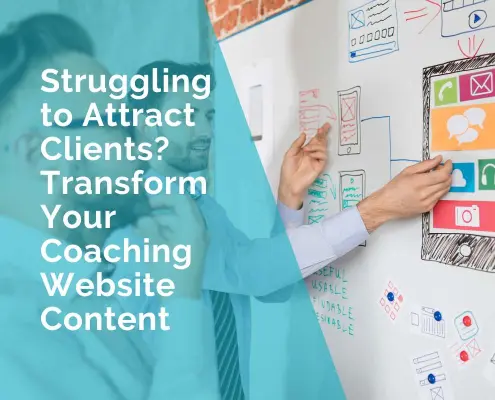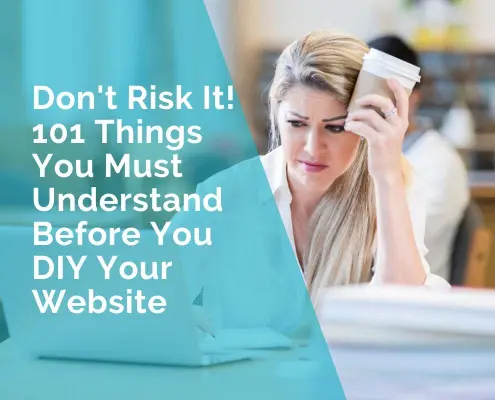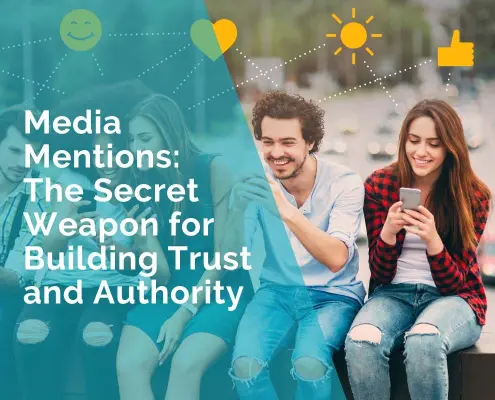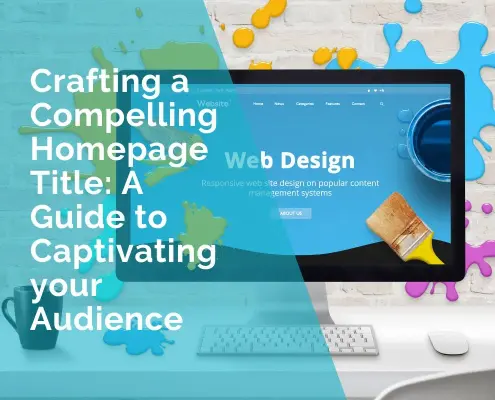Service Page Content: How to Create a Killer “Services” Page
When a visitor arrives on your Service page, they must feel like they are at the right place and that you will solve their problem(s).
If you’re looking to increase conversions on your Services page, creating compelling content is an excellent way to do it. It’s important to highlight the value of your services in a way that resonates with your target audience, while also making sure they understand what they’ll receive once they convert.
The Service page content must flow in a logical order and answer questions your potential customer might be asking about your service.
You want to keep them on your page as long as possible and when they finish reading they take the next logical step, which might be to request more details, download a report or book a consult.
For a quick reference check the Service Page Content Checklist Infographic.
As such, to create a service page, I recommend having each service or program on its own page and include the following:
Page Title
Creating the perfect page title for a Service page is an essential part of optimizing your website for success. Not only does your Service page need to be highly engaging and informative, it also needs to have a title that tells visitors exactly what they can expect from the content. Here are some tips for crafting compelling titles that will help attract customers and increase conversions:
First, make sure the title accurately reflects what’s being offered on the Service page. It should include keywords related to the services or products you offer – this will not only make it easier for potential customers to find you in search engine results pages (SERPs), but also increases the chances of them viewing your page as relevant and clicking through.
Next, make sure your title is clear and concise. Avoid using overly long titles that could confuse readers or turn them away before they’ve had time to engage with your content. Try to keep it under 70 characters so it looks good on SERPs and social media posts.
Finally, use strong action words within your titles like “Discover,” “Unlock” or “Start.” These types of words provide a sense of urgency which can be motivating for potential customers who are researching solutions online. Combined with compelling adjectives such as “Extraordinary”, “Innovative” or “Revolutionary”, the title should provide enough information and intrigue to draw readers in.
By carefully crafting a unique yet descriptive title for each Service page, visitors can easily see what kind of value you offer and how it benefits them – making them more likely to click through and convert into customers.
Service Description
The following elements should be included in the Service description. Use bullet points and short sentences or include a video
1. Who is this service for
eg. CEO, small business owner, work at home mum
2. What problems does the service solve
Here is an example from a Cleaning Company:
Construction & Builders Cleaning- Get your building project ready for sale and tenancy with sparkling presentation for new occupants. Provide a safe, tidy site for all trades to work on. Pass the mounting dust and debris on to the professionals. We offer an extensive range of construction cleaning services to cover every stage of your process from pre-build, mid-project and final cleans to ongoing maintenance top-ups. This includes kitchens, bathrooms, floors, carpets, curtains, doors, windows, and rubbish removal across the entire building.
3. List benefits and features
Your copy should always focus on the customer and how you can help them, for example
Full-Service – Whatever your cleaning requirements, we’ve got you covered. No need to hire in more help or hang around to get those niggly extras and unique requests fulfilled. Our team is armed with the equipment, skills and initiative required to tick every single one of your boxes.
Flexible – We will create a bespoke cleaning schedule designed to meet your individual requirements at a time that suits you. We diligently get on with the task of cleaning and maintaining your environment while allowing you to focus on what you do best – managing your business (or your life!).
Answer FAQs
Include questions and answers that are frequently asked about this service or program, such as:
- How is the program / service delivered (face to face workshop, via social media, online course)
- How many people can / will attend?
- How do I book?
- When is payment required?
Pricing
Include pricing for your service(s). This can be structured as follows:
- packages with inclusions,
- per hour rate or
- a range, eg. from $550
Let your visitors know how they can pay you:
- Direct deposit
- Paypal / Stripe
- Credit Card
Outline the terms of doing business with you, eg. 30% deposit, payable within 30 days etc
Social Proof and Trust Icons
In order for someone to buy your products or services, they need to get to know you, like you and trust you. It is, therefore, important you include social proof and trust icons on your web page such as:
- Testimonials from happy customers
- Case studies
- Trade association memberships
- Reviews and media mentions
- Awards and certifications
For other ways to prove you are trustworthy, check out 24 Ways to Prove Your Credibility
Photo Gallery
Where possible use real photos, not stock images. It makes you look more professional and believable.
- Show photos of you delivering the service, eg workshop, face to face consult
- Show logos of customers who have used this service
- Before and after photos
Call to Action
Take every opportunity to connect with your customer and capture their details so you can keep in touch.
This can be done through a powerful call to action, such as:
- Book a Discovery Call
- Register for Workshop
- Download free report
- Sign up for a Webinar
Find out more about essential Calls to Action
Contact Details
Make it easy for your customers to contact you and either include your contact details or a link to your contact page. Contact details should include:
- Telephone
- Mobile
- Social media profiles
- Address
- Contact form
You May Also Be Interested In
If the visitor is not ready to book your service, you want to give them the opportunity to learn about other products or services you offer or prove to them you are the expert in your field. This can be done by including a “you may also be interested in” section, which includes relevant:
- Blogs
- Articles
- Resources
- Services
- Products
- Programs
- Courses
visitor might be interested in.
Meta Description
Meta descriptions are the short snippets of text which appear at the top of search engine results.
They should be concise and offer an overview of the content on your Service page, describing why it is relevant to a user’s query.
Every Service page should have a unique meta description which accurately describes the services you are offering and how they can benefit customers.
This helps increase click through rates from search engine results as users will more likely click on pages that seem to provide exactly what they’re looking for!
Additionally, having meta descriptions also helps with SEO efforts – ensuring that your services show up in relevant searches. As such, it’s important to ensure that each page has its own unique meta description which accurately summarizes what the page is about and why potential customers should visit it.
If your business is product focussed, check out our checklist for products pages.
Service Page Examples

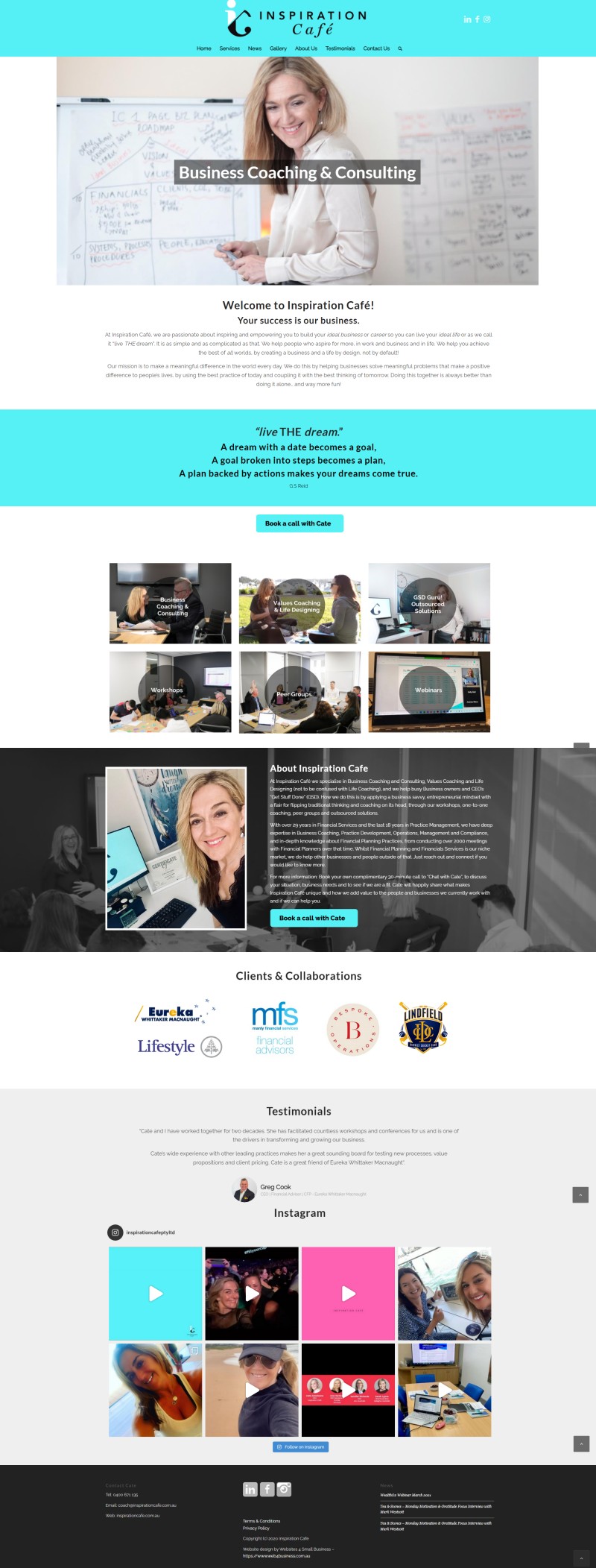
Service Page FAQs
How can I make sure my Service page content is engaging and informative?
Creating engaging and informative content for your Service page is key to converting potential customers. To ensure you’re creating the best possible content, there are a few key elements to focus on.
First, make sure the copy speaks directly to your target audience and their unique needs. You should be clearly speaking to customer pain points or wants, providing a compelling argument that your services can provide the solutions they seek. Additionally, it’s important to use language which shows how your services will benefit them – rather than just listing out features and technical specs.
Second, leverage visuals such as images, videos and infographics whenever possible. These visual elements really help draw readers in – making the copy much more engaging and enjoyable to read. You can even include screenshots of how you implemented the solution or before/after imagery if appropriate.
What are some tips for crafting a compelling page title?
Crafting an attention-grabbing, compelling page title is key to increasing organic search engine traffic and drawing in potential customers. Here are a few tips for making sure your titles are effective:
Keep it Short – Your page titles should be brief and to the point – ideally no longer than 50-60 characters so that they don’t get cut off in search engine results.
Include Keywords – Include relevant, targeted keywords which accurately describe the services you offer on your page. This helps increase visibility in search results and helps ensure your titles are relevant to user queries.
Focus on Benefits – Make sure your titles clearly show what benefits customers can gain from visiting or interacting with your services. By focusing on benefits rather than features it makes the title much more appealing to potential customers who are looking for solutions to their problems!
Aim For Emotion – If possible, try to aim for titles which evoke emotion or curiosity as this will help drastically increase click through rates from search engine results.
How can visuals like images, videos and infographics help with conversions?
Visuals like images, videos, and infographics can be a powerful tool when it comes to driving conversions. Visuals can help engage potential customers and give them an easy way to learn more about your products or services.
Additionally, they allow you to better demonstrate the features and benefits of what you offer in a creative way that is both fun and effective.
By using graphics, you can make sure that your product or service stands out in users’ minds as they navigate the web.
For example, a visually appealing infographic may stick with users longer than simply reading a description of what you have to offer. In turn, this increased engagement could lead to higher conversion rates on your website as visitors feel greater affinity for your company’s offerings.
Do I need to include actionable calls-to-action (CTAs) on my Service page?
When it comes to improving conversions on your company’s Service page, one of the most effective tools you can use is a call-to-action. A call-to-action (or CTAs) are prompts or phrases that prompt visitors to take the next step in their customer journey. They should be actionable, relevant and engaging in order to encourage potential customers and give them a clear direction on what they need to do next.
By including actionable CTAs, you can help guide customers through the buying process and provide them with a more intuitive user experience. This will keep customers engaged and make sure that they are more likely to take the desired action at each stage.
When designing your Service page, try to position CTAs prominently throughout the page so that visitors know where to click and what actions you want them to take. Additionally, make sure that all CTAs link directly to an appropriate landing page that corresponds with what was promised. If possible, you may also want to personalize each CTA for different types of customers if there’s enough information available about who is visiting your website.
How can I create content that speaks directly to customer pain points and problems?
One of the most effective ways to create content that speaks directly to customer pain points and problems they are facing is by identifying and understanding your target audience.
By getting to know who your ideal customers are and their individual challenges, you can tailor your content marketing in a way that specifically addresses these issues.
This will help establish trust between you and your potential customers and make them feel like you are genuinely trying to help them solve their problems.
In order to better identify customer pain points, consider conducting surveys or interviews with existing customers or those who have similar characteristics as your target audience.
This will provide valuable insights into what their needs are, how best to reach out to them and what some of their key challenges may be.
Additionally, monitoring comments on social media platforms, analyzing the competition’s content, reading industry forums and studying website analytics data can also be great sources of information that can assist with digital marketing.
Once you’ve gathered enough data, use this knowledge when crafting your own content by highlighting solutions that address these issues head-on.
Additionally, present information in a practical way so that it’s easy for people to understand what steps they need to take in order to overcome their challenges – giving them an incentive to stay engaged throughout the journey.
What should I list out in order to create content focused on promoting the value of my services?
When it comes to promoting the value of your services, one of the most effective strategies you can use is creating content that focuses on benefits.
This type of content should clearly outline what customers can expect to gain from using your service and how they will benefit overall.
When crafting this sort of content, there are several important things you should list out in order to ensure success.
First and foremost, start by identifying who your ideal customers are and the specific problems they want solved. Doing so will provide valuable insights into what type of content will be most compelling and engaging for potential customers.
Once you have a better understanding of who your target audience is, create a list outlining the features and benefits of your service in detail. Explain exactly why each benefit matters and how it specifically helps solve or improve customer’s needs.
Additionally, focus on highlighting results that prove the efficacy of your product or service as well as any unique advantages or accomplishments it has achieved throughout its lifetime.
Additionally, don’t forget to include customer testimonials – which are a great way providing further proof for why people should choose you over your competitors. In general, try to back up all points with evidence if possible as this will help add validity to all claims made in the content.
Should I use keywords related to my services in the page title?
When it comes to optimizing content around services, using keywords related to the service in the page title is a great way to increase visibility and attract more visitors.
Search engine algorithms are designed to scan through titles and look for key terms that best match with user queries.
By including relevant keywords in your page titles, you will be able to optimize for these searches, thus increasing the chances of people finding your content in search results.
Additionally, keep the length of titles reasonable as search engines usually truncate overly long titles – which can take away valuable space that could have otherwise been used for vital keywords.
Aim for around 60-70 characters as this is generally considered ideal.
It’s also important to ensure that all title tags are unique and accurately describe what type of information you offer on each page.
This helps differentiate between pages on your website while also providing readers with helpful context before they click into each one – making it easier for them to decide if the page contains what they are looking for or not.
Explore Related Content

Author: Ivana Katz – Websites 4 Small Business – www.web4business.com.au; Ivana makes it easy for you to get your business online very quickly. If you’re looking for a professional and affordable website designer, CLICK HERE and download your FREE copy of “Ultimate Website Design Secrets Blackbook – 10 Bulletproof Strategies for Designing an Outrageously Successful Website”
You may also be interested in:








